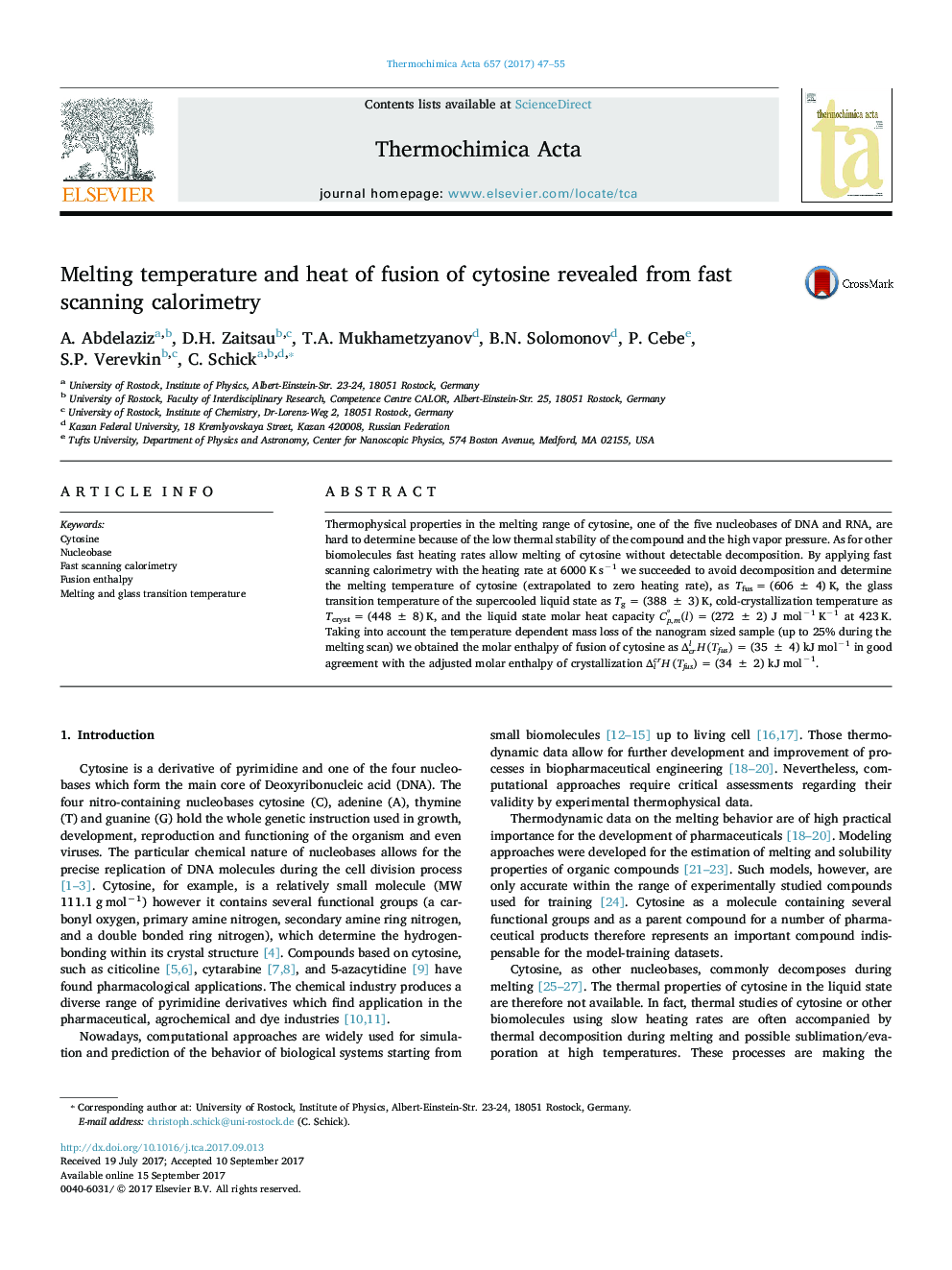| Article ID | Journal | Published Year | Pages | File Type |
|---|---|---|---|---|
| 4995806 | Thermochimica Acta | 2017 | 9 Pages |
â¢Fast scanning calorimetry allows investigation of melting of thermally labile and volatile compounds.â¢For cytosine melting temperature and heat of fusion were determined.â¢For the amorphous cytosine glass transition temperature, liquid specific heat capacity and cold crystallization temperature became accessible.
Thermophysical properties in the melting range of cytosine, one of the five nucleobases of DNA and RNA, are hard to determine because of the low thermal stability of the compound and the high vapor pressure. As for other biomolecules fast heating rates allow melting of cytosine without detectable decomposition. By applying fast scanning calorimetry with the heating rate at 6000 K sâ1 we succeeded to avoid decomposition and determine the melting temperature of cytosine (extrapolated to zero heating rate), as Tfus = (606 ± 4) K, the glass transition temperature of the supercooled liquid state as Tg = (388 ± 3) K, cold-crystallization temperature as Tcryst = (448 ± 8) K, and the liquid state molar heat capacity Cp,m°(l) = (272 ± 2) J molâ1 Kâ1 at 423 K. Taking into account the temperature dependent mass loss of the nanogram sized sample (up to 25% during the melting scan) we obtained the molar enthalpy of fusion of cytosine as ÎcrlH(Tfus) = (35 ± 4) kJ molâ1 in good agreement with the adjusted molar enthalpy of crystallization ÎlcrH(Tfus) = (34 ± 2) kJ molâ1.
